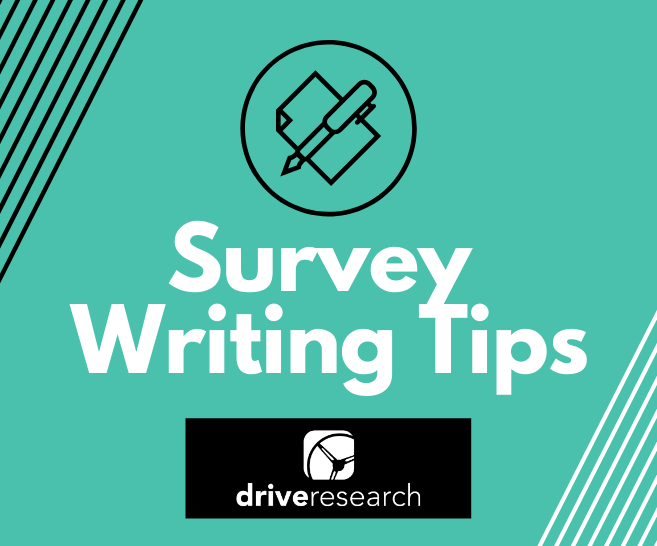Survey writing is a science. However, there is no "right" way to design a survey draft. What one person designs can be completely different from what another person designs but in many circumstances, both can be useable. So when it comes to survey design, it's often more about "what not to do" than "what to do". As I wrote about before on this site, one of the first and most important lessons I learned in survey writing was a simple tip called MECE (mutually exclusive collectively exhaustive), read more about it here.
Avoid simple survey writing mistakes by practicing SONAR.
I recently came across another tip the other day when reviewing some training documentation and videos provided by MaritzCX. Their survey writing tip is called SONAR. Although this tip won't help you with creative survey writing or addressing project objectives, the use of SONAR is a good last checklist item before passing your draft to your colleagues, boss, or client.

(S) Specific
Be specific with your questions and list specific response categories as well. A simple example is applying a timeframe to a purchase decision. Instead of asking "have you ever been a customer of our company?", ask "have you purchased one of our products or services in the past 12 months?" Avoid using jargon and acronyms. You may sound smart but if it comes at the cost of the respondent misinterpreting the question or dropping out of the survey because they are confused, you'll become the "really smart guy who has good vernacular who obtained 13 responses" instead of the "really smart guy who could relate to his audience and found a way to get 350 responses."
(O) Objective
The key here is to remain unbiased in your questioning. It seems simple but often little or big words can impact a response positively or negatively. Instead of asking "with over 100,000 cell towers in the U.S., how would you rate your satisfaction with our nationwide satellite coverage?", simply ask "how would you rate your satisfaction with our nationwide satellite coverage?"
(N) Non-Ambiguous
Handle one factor at a time to avoid a double-barreled question. Instead of asking "how would you rate the quality and the price of our food?", ask "a) how would you rate the quality of our food? b) how would you rate the price of our food?"
(A) Actionable
Don't waste your customers' time or your own time by asking survey questions which will go unused. It may be nice to ask general questions to obtain data like the following: "72% of our customers visit our website on a monthly basis." What can you do with this data point? Is this good? Bad? Should it be 90%+? How can we make it 90%+? Instead, ask some questions about driving traffic to the website such as "for which of the following reason(s) do you visit our website?" or "what would it take to get you to visit our website more often?" The data you'll receive from these types of questions will be much more actionable.
(R) Relevant
Skip logic and branching is your best friend in survey development. If a person has not visited your store in the past month, you should not ask them a question like "thinking about your visits to our store in the past 14 days, how would you rate..." Make sure the questions are relevant to your audience. It seems almost too simple, but I always see irrelevant answers or survey paths that do not make sense to the user because the development was rushed or untested.
Drive Research is an online survey company in Buffalo, NY and Upstate, NY. For more information on our online surveys visit our page on our website. Questions about market research? Call us at 315-303-2040 or email us at [email protected].
